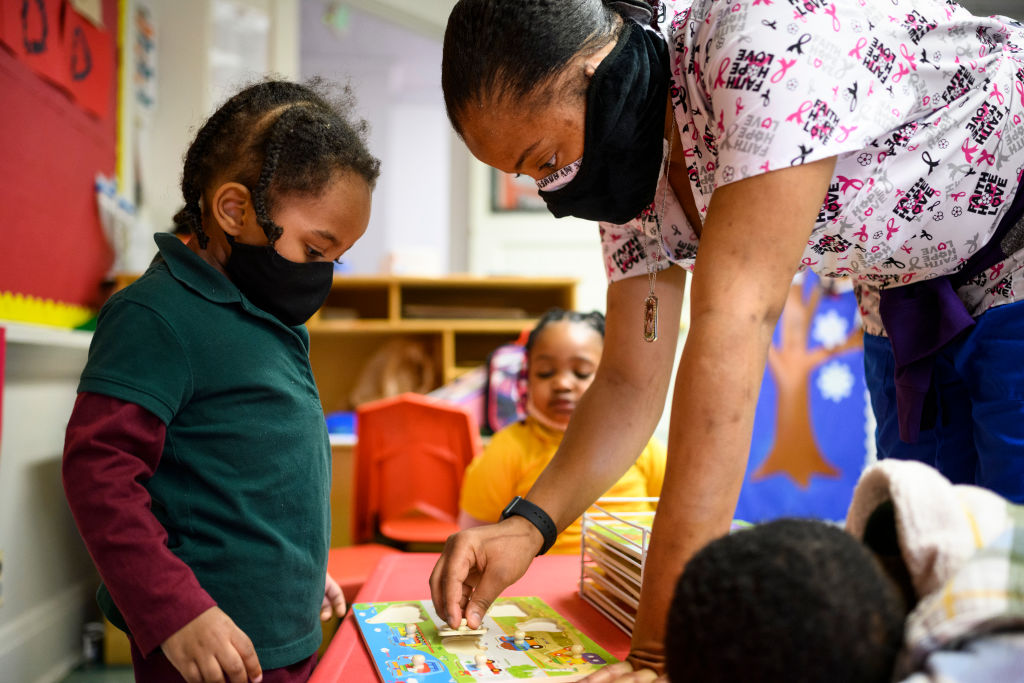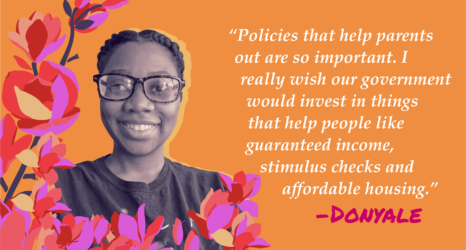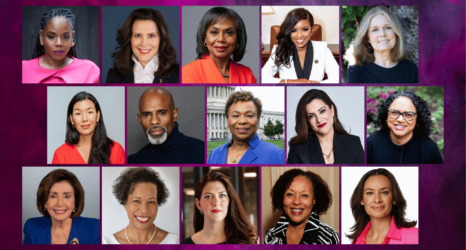
Let’s imagine, just for a moment, a childcare and early learning system that has the public investment it truly needs. Our educators would be compensated fairly, their facilities supported and families would no longer struggle to afford and find high-quality programs for their children. Everyone connected to that strong childcare system would have more freedom to contribute to an even stronger economy.
In early January, the U.S. Bureau of Labor Statistics released its monthly Employment Situation Report. It found that while the nation’s unemployment rate ticked down in December 2022 and now sits at historically low levels, the labor force participation rate—or the approximate percentage of the population who works or is actively seeking work—remained stagnant and unchanged since the beginning of 2022.
In fact, the U.S. labor force participation rate of 62.3 percent is well below most G20 countries.
The picture worsens for women. Their labor force participation lags that of men by more than 11 percentage points. For families, and especially mothers, available childcare can make a significant difference by increasing labor force participation, sustaining employment and achieving economic security.
We read news articles almost daily about parents who want to work. They want to participate in the labor force, but cannot afford or find the childcare they need to hold down a job. Countless parents have told us how entire paychecks can be spent to meet the staggering price of childcare. Research supports what we’ve heard: In 2021, Child Care Aware of America’s (CCAoA) analyses showed that childcare prices increased by 5 percent.
Consider what Joy, a mom in Texas, shared, “If I can’t go to work, I can’t afford to pay for childcare. And if I don’t have childcare, I can’t get to work.”
Parents like Joy are caught in an endless cycle of not being able to find, afford or keep childcare.
Countless parents have told us how entire paychecks can be spent to meet the staggering price of childcare.
Today, childcare is out of reach for families throughout the country. Whether it’s after-school care or full daycare for infants, childcare consumes a large share of family income among those who pay for childcare services. A new report by the Department of Labor’s Women’s Bureau estimates the price of care represents between 8 and 19.3 percent of median family income per child. In addition, CCAoA has found childcare is significantly less affordable for single-parent households and households of color.
Affordability is not the only concern; even if all families could afford childcare, the number of childcare slots available in the U.S. falls short of our nation’s needs. CCAoA determined that while 12.3 million children had all parents in the workforce in 2021, there were only 8.7 million licensed childcare slots available. That’s a 3.6 million-slot gap.
With high prices and high demand, some might think childcare providers are cashing in. This, however, is not the case. High-quality childcare is labor intensive and requires significant resources, which forces programs to operate on thin margins with childcare workers typically among the nation’s lowest paid workers. While childcare providers are the “workforce behind the workforce,” the national median wage for childcare workers is now around $13 per hour and most work without employer-provided health insurance or other benefits.
Historically, childcare work is—and has been—deeply undervalued. Public support for childcare is needed to truly compensate providers properly for the important work they do. Childhood educators are entrusted to prepare our children—the nation’s greatest resource—for the future. It’s time we recognize and treat early childhood educators like the professionals they are.
We must do more to increase our nation’s stagnant labor force participation rate. Childcare providers and the families who depend on them cannot continue to bear the burden of supporting our current system without additional support. Amid the pandemic, our nation made historic investments in childcare, and the recently signed government spending bill included additional money for states to fund childcare.
As vitally important as these increases are, the U.S. childcare system needs to be radically transformed. Our nation must focus on creating a childcare system that is affordable, accessible and equitable in the long term.
Up next:
U.S. democracy is at a dangerous inflection point—from the demise of abortion rights, to a lack of pay equity and parental leave, to skyrocketing maternal mortality, and attacks on trans health. Left unchecked, these crises will lead to wider gaps in political participation and representation. For 50 years, Ms. has been forging feminist journalism—reporting, rebelling and truth-telling from the front-lines, championing the Equal Rights Amendment, and centering the stories of those most impacted. With all that’s at stake for equality, we are redoubling our commitment for the next 50 years. In turn, we need your help, Support Ms. today with a donation—any amount that is meaningful to you. For as little as $5 each month, you’ll receive the print magazine along with our e-newsletters, action alerts, and invitations to Ms. Studios events and podcasts. We are grateful for your loyalty and ferocity.





